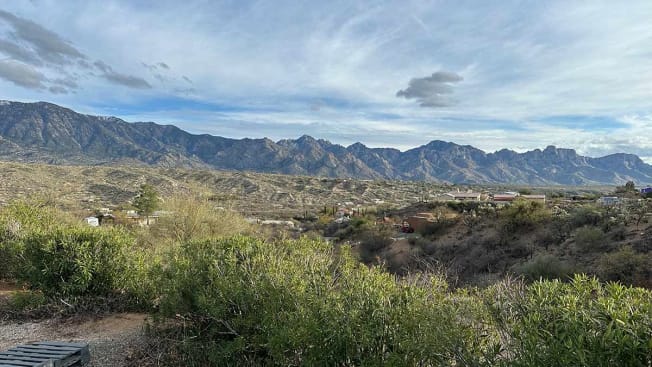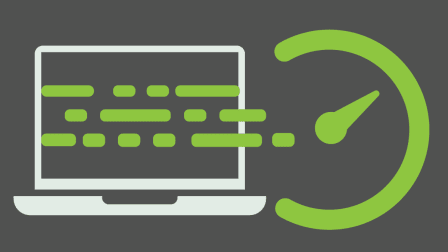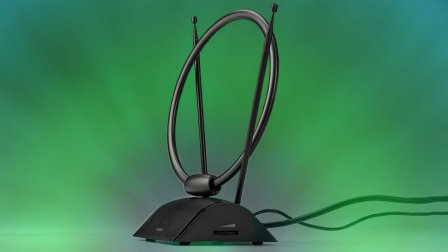Using Starlink to (Finally) Get Fast Internet at Home in Rural Arizona
After buying a satellite dish and signing up for a $120-per-month plan, my friend, a retired veteran who lives beyond the reach of cable or fiber connections, now has a 115-Mbps connection

About 45 minutes north of downtown Tucson, and a million miles from the densely populated Bronx neighborhood where I grew up, lies Catalina, Arizona. It’s a small town in the middle of a great big desert, so beautiful you’d be forgiven for almost thinking it’s fake.
Hiking trails cut through the snow-topped mountains to the east. Quails, roadrunners, and other critters I once encountered only on the Discovery Channel crisscross dusty dirt roads. At sunset, the cloudless sky on the western horizon turns a sort of Nickelodeon orange. And at night, coyotes howl so forcefully it sounds like you’re surrounded, thanks to an audio effect known as beau geste.
All that physical beauty comes with a price for those who wish to be online: Let’s just say the options for internet service are very limited. I have a friend in Catalina, a retired military veteran, and she can’t get Comcast or Cox, the primary internet service providers (ISPs) in nearby Tucson. The 5G fixed home internet services offered by AT&T, T-Mobile, and Verizon aren’t available, either.

Source: Starlink Source: Starlink
Starlink says it now has more than 2.5 million subscribers worldwide, including my friend in Catalina. For $120 a month, she gets roughly 115 megabits per second down and 12 Mbps up, according to informal speed test results recorded via Fast.com.
I’ve personally had an internet connection about 10 times faster than that for the past five years, so I was curious to see how well Starlink would handle my workload—not to mention all the other things people use the internet for nowadays, from streaming high-res video to playing online games with friends.
So, I got to work.
Over the course of several visits to my friend’s home, I put Starlink to the test, using it for both my job and play. I used the connection mainly from a small bedroom-turned-home office, seated just a few feet from the Starlink-provided router. (You can use your own router if you prefer.)
I video-chatted with my colleagues back east using Google Meet. I streamed Apple Music Classical while writing articles—yes, including this one—in Google Docs. I streamed 4K video from Amazon Prime and Peacock. I even played a bit of old-school Halo on my Steam Deck.
All-in-all, Starlink performed quite well, delivering an experience almost indistinguishable from the gigabit Comcast connection in my own home. I say “almost” because I experienced a few small hiccups while streaming video and playing games. But on the whole? Not too shabby for a signal beamed down from near-earth orbit.

Photo: Nicholas De Leon Photo: Nicholas De Leon
All In a Day's Work
I work from home, which means I spend most of the day inside a web browser (lately, Microsoft Edge) writing articles in Google Docs, reading and responding to email while listening to music, and balancing a bunch of spinning plates in various project management apps.
All of that is to say my day-to-day activity isn’t too demanding. Even Google Meet, which CR uses for videoconferencing, recommends only a little less than 4 Mbps to use comfortably.
Considering that I was able to browse the web and edit office documents well before today’s broadband speeds became commonplace, I wasn’t worried about placing my daily output in the hands of Starlink. I was prepared for some challenges in talking to my team on video calls, but no, that did not turn out to be an issue, even when I was seated in the backyard, roughly 100 feet away from the router.
In short, Starlink appears more than up to the task for general office and school work. If, however, you have more demanding chores—regularly uploading 4K video to a YouTube channel, for example—you may want something a bit faster.
Gaming With Starlink
Of course, we all use the internet for a whole lot more than sending emails and video conferencing. How well does Starlink work for the fun stuff, like binge-watching old TV shows and playing Halo way past bedtime?
Not quite perfect, but I never felt like it was getting in the way of a good time.
Let’s start with streaming.
Streaming video, even 4K high-resolution video, isn’t all that demanding—though your needs may increase if you’ve got a house filled with people trying to stream simultaneously. Netflix, the largest streaming platform, recommends a minimum of 15 Mbps for a single 4K stream. Disney says 25 Mbps. With 100 megabits down, my Starlink connection was mostly up to the task.
At various times of the day, I streamed video from Peacock, Prime Video, YouTube, and Twitch. Whenever I tapped (or clicked) on content I wanted to watch, it loaded instantly, no different than if I was using my gigabit Comcast connection at home.
But I did experience some buffering while streaming video, generally after an ad break. I’d have to wait a beat or two for the stream to stabilize once the show resumed. Did this happen every time? No, and it rarely happened in the middle of the content stream itself, but I don’t want to leave the impression that Starlink performed flawlessly.
Now let’s consider gaming.
I play a fair amount of video games, whether that’s Tekken or Final Fantasy on my PS5, old-school titles like Diablo II and Quake on my PC, or the latest Mario or Zelda on my Nintendo Switch. I also have a Steam Deck, a Switch-like portable PC with a mix of old and new games that allows me to play them basically anywhere.
I was prepared to suffer through a good bit of latency as signals were relayed from satellites more than 300 miles overhead. Downloading games was no problem—Halo: The Master Chief Collection took only about 25 minutes—but actually playing online and winning? Let’s just say I had low expectations.
So I was a little gobsmacked once things got underway.
On my SteamDeck, I played Halo: The Master Chief Collection, Mortal Kombat X (my favorite of the recent Mortal Kombat games), and Street Fighter V. On my Switch, it was F-Zero 99, a futuristic racing game pitting me against 98 other players in a single run.
Much to my surprise, the games played mostly (though not entirely) as well as they do on my home Comcast connection.
Take Halo, where I was able to snipe opponents without hesitation, running across the map without any of the telltale “jitter” you see with a bad connection. I’m not nearly as good at Halo as I was a few years ago, but I can’t blame Starlink for that.
F-Zero 99 also played flawlessly on my Switch: I was able to hop into an online race and control my car no differently from playing offline. The controls were smooth and responsive, and I was able to activate speed boosts and spin attacks with ease.
Mortal Kombat X and Street Fighter mostly performed well, though I had some trouble with the latter.
Both feature fighting competitions where timing is everything: You need to punch, kick, and block at a precise moment or you end up face down on the ground. With Mortal Kombat, I more than held my own. With Street Fighter, however, I did experience stutters every now and then. The action would freeze for a fraction of a second, throwing off my timing. It didn’t occur in every fight, and, honestly, I’m not sure if Starlink or the game’s programming was to blame, but it was the only time I said to myself, “This is not a great experience.”
Overall, I was shocked at how well Starlink performed for gaming. Not perfect, but not bad at all.
Who Starlink Is Best For
Before driving to Catalina, I didn’t really know what to make of Starlink. I had of course heard of it (mostly in the context of the war in Ukraine), but never gave it much thought until I started spending more time at my friend’s home, about 20 minutes north of my own.
Thanks to the Infrastructure and Jobs Act, signed into law by President Joe Biden in 2021, the federal government has allocated nearly $65 billion to help improve broadband access in rural areas and make internet service more affordable for lower-income households. In the meantime, satellite services like Starlink provide a vital alternative for communities trapped outside the digital divide.
But they could be just as impactful in communities limited to just one internet service provider. If you’re not receiving the speeds you were promised or you’re simply fed up with your ISP, you may now have a solid plan B.
Yes, I did notice some hiccups here and there, but nothing worth getting too upset about—especially if your choice is between Starlink and watching the clouds pass by.




















